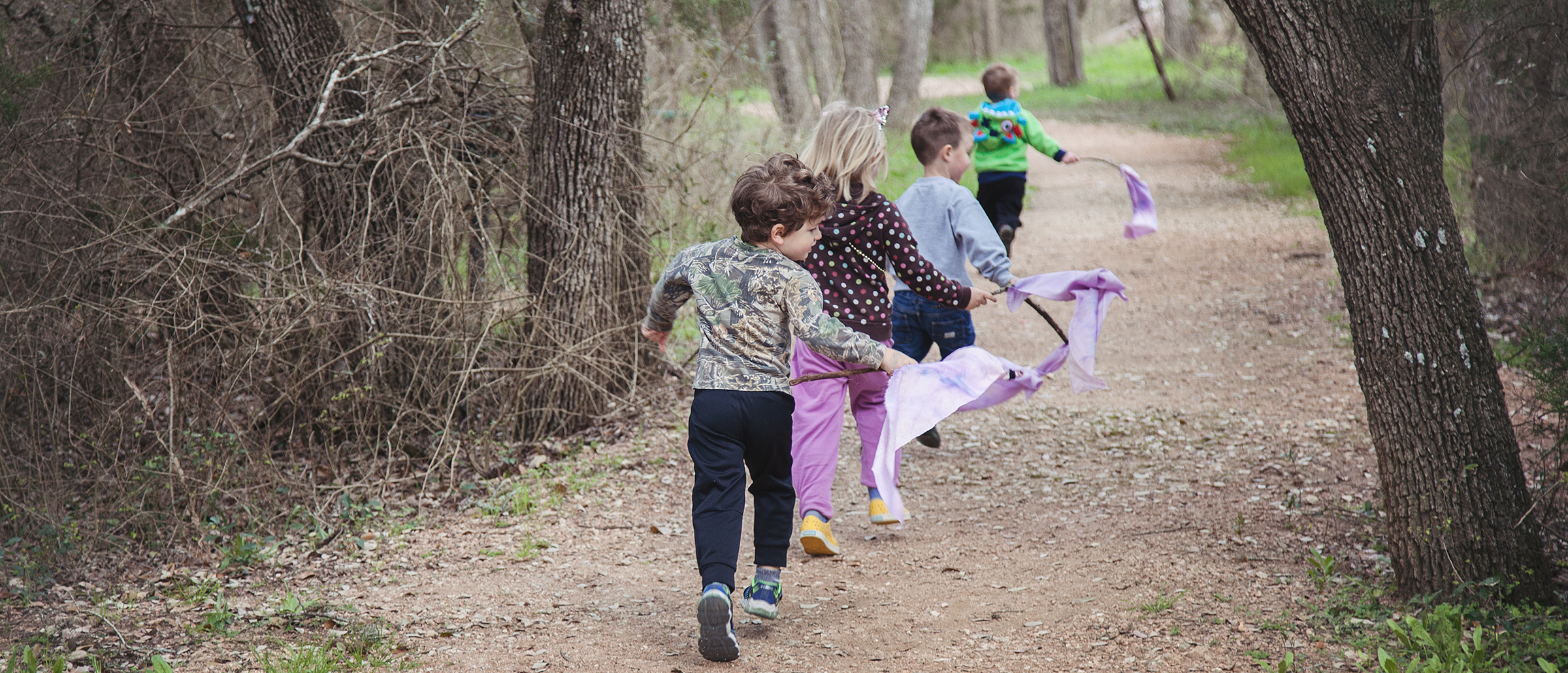As parents and caregivers, we've been on an emotional rollercoaster for months in the COVID-19 pandemic. So much is uncertain, kids can seem like they are regressing, and our one job—keeping them safe and happy—feels more challenging than ever.
One thing we’re hearing over and over from the Tinkergarten community and our own kids is: We miss playing with our friends outside.
Opportunities to come together and play are so needed, and we can see it and feel it in our kids. Going outside—in a safe and thoughtful way—is the best way to make that happen, and public health experts agree.
Time spent outdoors offers mental and physical benefits, and Americans aren’t getting enough of it, these days especially. The NY Times recently cited concerns about "nature deficit disorder," a fear many experts have for kids who've been cooped up since March. It’s a non-medical term for behavioral problems that may stem from too much time indoors—and not enough free play in nature. Add in our basic need to socialize, and getting together outdoors is a mental health combo we all need right now.
And though access to outdoor space varies from family to family, from private yards to patches of grass to city sidewalks and common courtyards, finding a way to get a dose of nature no matter where you live is game changing for everyone. Here's why outdoor play, and lots of it, should be at the top of your to-do list.
The outdoors are safer
Experts say that when we’re together, it's much safer to be outside than in. And with proper safety protocols, kids and families can and should enjoy lots and lots of nature time this summer.
The NY Times cited a study from Japan of 100 cases, which found that coronavirus was 20 times more likely to transmit indoors than out, because of the dispersion of viral droplets. Breathing together in confined spaces carries tons of risk; outdoors that risk is much, much lower—and drops to negligible when you wear masks and maintain social distance.
For example, William Schaffner, medical director for the National Foundation for Infectious Diseases, said in a recent interview that "the risk out of doors is lower than it is when we're in enclosed spaces.” And Dr. Erin Bromage, a biology professor and immunology expert at UMass Dartmouth recently recommended families enjoy "any outdoor space with ample room for social distancing," including parks, beaches and trails.
Julia L. Marcus, an epidemiologist and assistant professor at Harvard Medical School, recently shared similar thoughts with the New York Times: “I think going outside is important for health,” she said. “We know that being outdoors is lower risk for coronavirus transmission than being indoors. On a sunny, beautiful weekend, I think going outside is indicated, but I also think there are things to do to reduce our risk.”
The benefits outweigh the risks for kids
“People are thinking about these non-quantified risks and benefits,” Dr. Amber Fyfe-Johnson, a pediatrician, epidemiologist and assistant professor at Washington State University, told Tinkergarten. “We want a number, but we don’t have it. The numbers do suggest that between-child transmission of COVID is very low—it’s still a risk—but people in the public health realm are saying it’s important to get kids outside.”
With the right approach, we can manage the risk
In another interview, Bromage stressed that “it’s the types of interactions” we have outside that matter. Common-sense guidelines apply: Keep 6 feet of distance if you can, wear masks (if you’re over 2) and don’t share food or utensils with people outside your immediate family.
Dr. Sally Goza, president of the American Academy of Pediatrics, has also encouraged parents to get kids together with friends outside this summer and, to keep it safe, wear masks, keep distance and wash hands frequently.
How do we put these precautions in place?
One key is to avoid big crowds and do your best to maintain social distancing protocols, especially those that have been mandated where you live. To teach little kids social distancing, we can do things like help kids envision a 6-foot personal space bubble and remind children of the reason that we are keeping our distance: We want to keep ourselves and our friends safe. Older kids can get that message in even greater detail: Keeping a 6-foot bubble makes it much less likely for the virus to spread. Children are wired to physically connect, but with practice and time, their impulse control can catch up and they can learn to interact—and enjoy it—from a safe distance.
While the outdoors are safer in terms of lower potential for viral transmission, it’s important to acknowledge that we don’t all enjoy equal access. Historically, parks and green spaces haven't been a place where people of all races have been made to feel at ease or even safe—and that history still negatively impacts how some people experience that natural world. There's a lot we can all do (read here for ideas) to learn more about this and help make the outdoors more accessible to everyone. Organizations like In Solidarity, Outdoor Afro, Diversify the Outdoors and Soul Trak are working to right the imbalance.
Though COVID has made it all the more apparent, the outdoors offer an ideal environment for children to play and learn. With schools’ strategies shifting and parents trying to juggle working with childcare in quarantine, it’s a relief to know that when kids play outside, they’re naturally learning and developing important skills, from sensory engagement to empathy. And if you're looking for more ways to fuel outdoor play, check out our Tinkergarten classes this winter.
